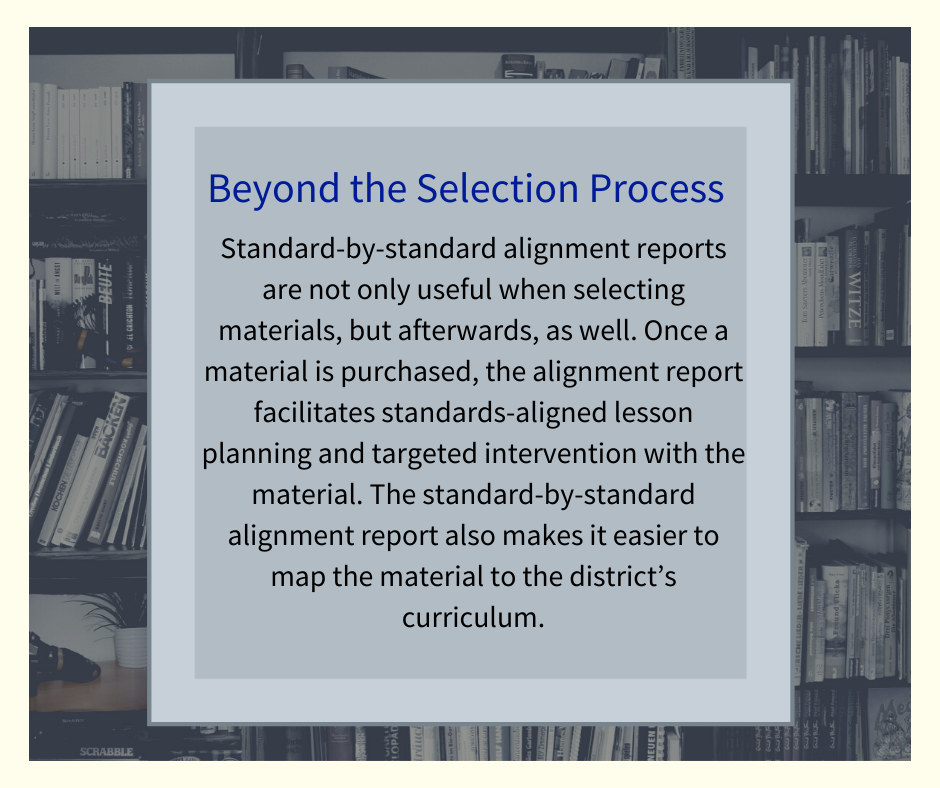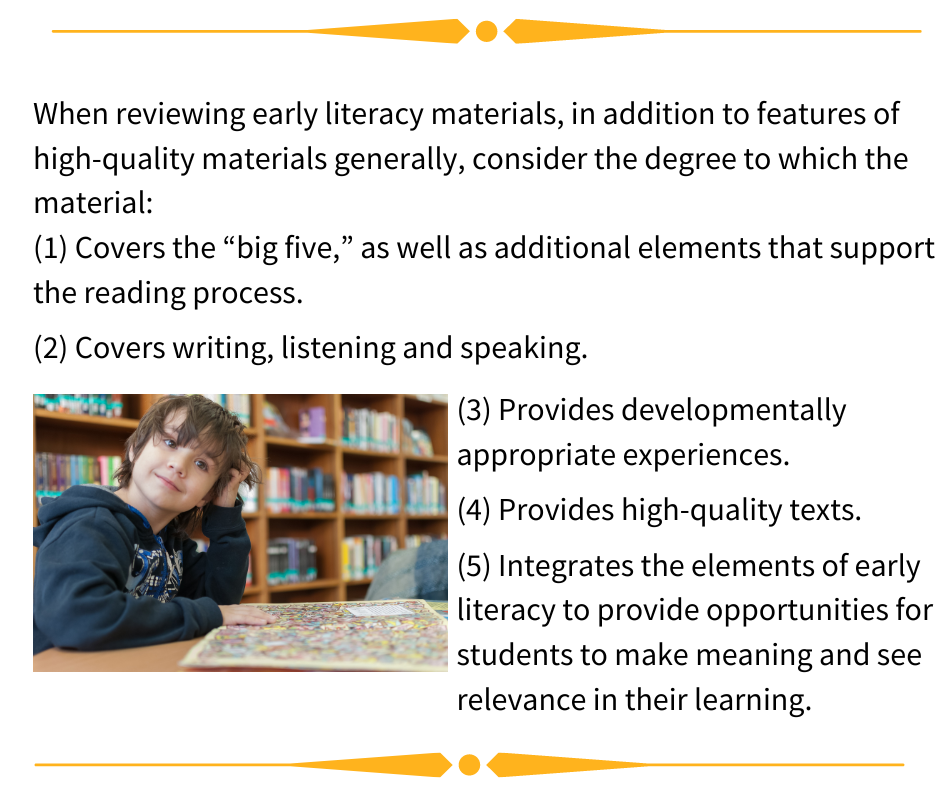Early literacy development is critical to students’ success in the later grades and arguably, in life. Because students come to school with varying degrees of literacy, the quality of instruction and the quality of materials used in the classroom are primary determinants of the level of content and skill mastery young students achieve in literacy. What criteria do you look for when evaluating materials for early literacy?

Like most educators, at Learning List we believe that the instructional quality of any material is based on its alignment to state standards and other quality indicators. Thus, our Alignment Report verifies publisher claims of alignment, and our Editorial Review assesses the instructional quality of the material. Here’s what we look for in each type of review.
When reviewing the alignment of a material, we check the citations (e.g., lessons, activities, assessments) listed in the publisher’s correlation for alignment to the content, context and cognitive rigor of each foundational skills standard for the grade level. Verifying the alignment of multiple citations for each standard makes it easy to determine whether the material addresses each of the critical elements of the reading process (i.e., phonological awareness, decoding, vocabulary) and to see where the material’s gaps are.

The rubric we use for our Editorial Review reflects the research behind the Science of Reading and best practices in early childhood education. For K-2 Literacy, our reviewers investigate a material’s coverage of specific elements of the reading process, including phonics, phonemic awareness, fluency, vocabulary, and comprehension, as well as other components of early literacy, such as writing, listening, and speaking.
In addition to features of high-quality materials generally (e.g., alignment, focus, rigor, vertical alignment, engagement), our early literacy rubric addresses components that are critical to early childhood, such as: the degree to which the materials provide developmentally appropriate experiences, the quality of texts included in the material, and the level of integration of the elements of early literacy to provide opportunities for students to make meaning and see relevance in their learning. In all, Learning List reviewers consider more than 75 criteria when reviewing the quality of an early literacy material and evaluating its potential effectiveness in meeting the learning needs of young students.
Over the last few years, many of our subscribing districts have requested reviews of adaptive early literacy products. Adaptive materials are more difficult to review, because different content is presented to each user. Based on our experience, however, districts should not assume that “adaptive” means “aligned to standards”; adaptive materials should be reviewed just as closely as any other products. Because we do not want our reviews to reflect a single educator’s opinion about a material, we work with publishers of adaptive products to find a way for multiple reviewers to review the same content. Some products provide a way for teachers to override the material’s adaptive features and assign specific content. If that is not an option, the publisher may have unique content identifiers that, when entered into the product’s search feature, would produce the same content for any reviewer to review. Alternatively, some publishers provide sample lessons/questions aligned to each standard.
We have shared criteria that Learning List looks for when reviewing foundational skills/early literacy materials. However, there are many ways to review materials, and different entities, including school districts, prioritize different criteria in their reviews. Besides the criteria you include in your rubric, thoroughness, objectivity, and consistency are the hallmarks of a high-quality review process and are essential for the comparability of completed reviews.